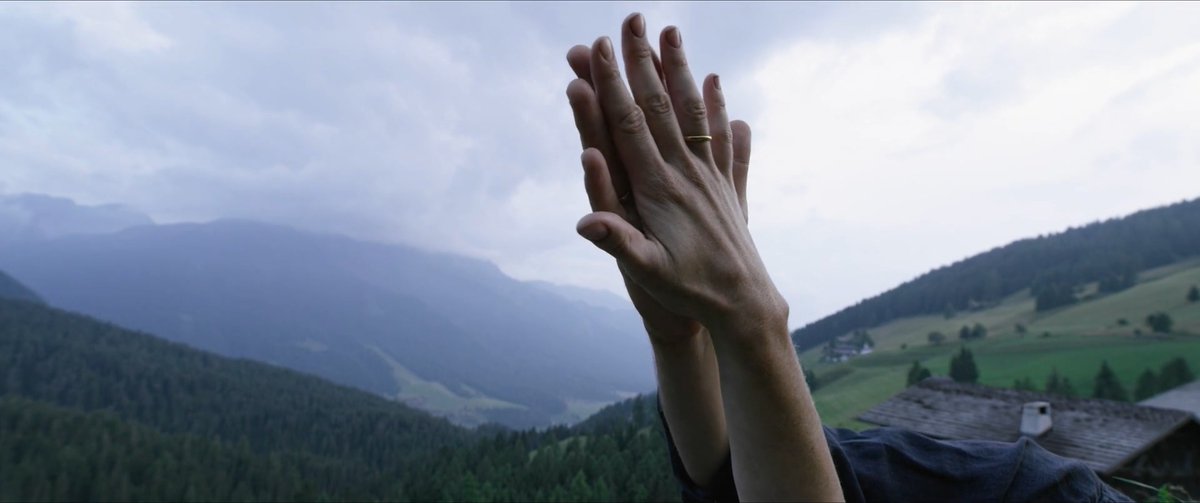We need at this moment, as at every moment, to return to the divine and transcendental realities of truth, beauty, and goodness. Those eternals and the Eternal Creator are what we are called to love. They are embedded in creation, even as they are beyond it.
We have to know and contemplate them in every way we can, for that activity is what it is to be fully human, to be truly happy. As the French philosopher Pierre Manent has noted, the question of what it is to be human is largely forgotten in the modern era, which aims to displace God and nature in favor of the human will.
Pope Benedict XVI, echoed by Pope Francis, expressed the deep concern that ours is the age of sin against the Creator. The current pope has taken this further, in the direction of sin against creation, whatever that might mean.
We need help to recover our understanding of what the Church long taught about creation. Policy discussions about the environment have their place, but that place comes after we understand the truths to which our human laws and programs should conform.
Then-Cardinal Joseph Ratzinger gave a series of homilies in 1981 on the Catholic account of creation. These are gathered together in a brief volume, ‘In the Beginning…’: A Catholic Understanding of the Story of Creation and the Fall.
He begins his first homily with the Genesis story about the beginning, and his own reaction to that story:
These words, with which Holy Scripture begins, always have the effect on me of the solemn tolling of a great old bell, which stirs the heart from afar with its beauty and dignity and gives it an inkling of the mystery of eternity. For many of us, moreover, these words recall the memory of our first encounter with God’s holy book, the Bible, which was opened for us at this spot. It at once brought us out of our small child’s world, captivated us with its poetry, and gave us a feeling for the immeasurability of creation and its Creator.
Beauty, dignity, mystery, poetry, immeasurability. Ratzinger’s words summon us back to an eternal, Eucharistic understanding of creation. They remind us to care for creation according to its own divinely instituted laws, with the human person at its summit.
Whatever we learn from the physical sciences, he continues, “Faith in creation is reasonable.” We cannot conceal our faith in creation, “for only if it is true that the universe comes from freedom, love, and reason, and that these are the real underlying powers, can we go forward into the future and live as human beings.”
Art can help us in this as well. In particular, I’ve been struck recently by some ways in which the films of Terrence Malick and the books of Mark Helprin give artistic development to Ratzinger’s understanding of creation.

Malick is Christian, and some say he is Catholic, though he does not discuss his faith publicly. That faith comes through clearly in his films, which always give the audience spectacular scenes of the natural world, pointing to the divine.
Helprin is Jewish, a celebrated novelist and essayist, an always powerfully imaginative writer with a deep appreciation for what the West has achieved, which he blends with imagery of creation to convey truth and beauty in an original way.
These artists can leave their viewers and readers rightly stunned, seeing the world in new light. That, at least, is my experience.
Malick’s movies are in some ways unconventional, unusual in relying on periods of silence and on voiceovers that can easily be overlooked (use the closed captions or turn the volume up) in the midst of both ordinary daily life and splendidly filmed visuals. Subtle facial expressions can signal deep conversions.
His The Thin Red Line explores what it is to be human in the midst of the violence of the battle for Guadalcanal, where God smiles on men even in the worst of times. Tree of Life treats a family’s loss of a child in the context of the whole of that family’s existence, bringing out the limits and possibilities of how we see glorious creation, and the mercy of God, in modern times.
His most recent A Hidden Life relies on the contrast between the magnificence of the Alps and the simple village life there, with the depths of a Nazi prison. That contrast reveals the full cost of a life devoted to truth and conscience, at a time when the world had lost its mind. (Note: TCT’s regular film expert, Brad Miner, had a different reaction to this film)
As for Helprin, here’s just one passage from his novel A Soldier of the Great War. Alessandro Giuliani, the book’s extraordinary protagonist, is an elderly Italian veteran of World War I, another instance of when the world went mad (as it seems to do regularly). He recalls his youth just before that war:
The absence of a strong ethic suited to our age, the rise of the machine, the decadence of Romanticism as it ended a long and fruitful existence. . .who knows? Whatever the factors and in whatever combination, they led to the conviction that what we believed was no longer true, things had come apart, God had deserted us. . . .It passed me by, for when I was young I was sure of the good of the world, its beauty, and its ultimate justice. And even when I was broken the way one sometimes can be broken, and even though I had fallen, I found upon arising that I was stronger than before, that the glories, if I may call them that, which I had loved so much and that had been darkened in my fall, were shining ever brighter.
We need to seek and find again those glories, manifestations of Ratzinger’s freedom, love, and reason that are everywhere in creation.















